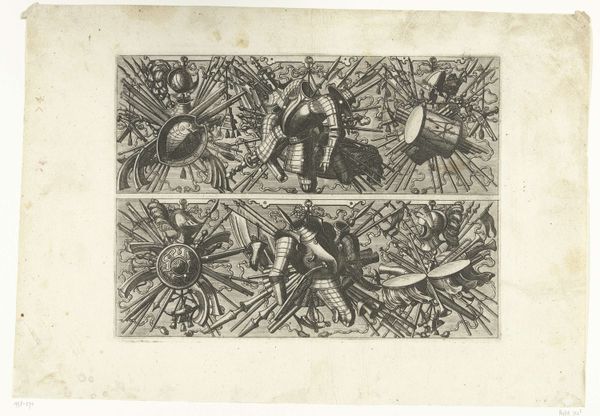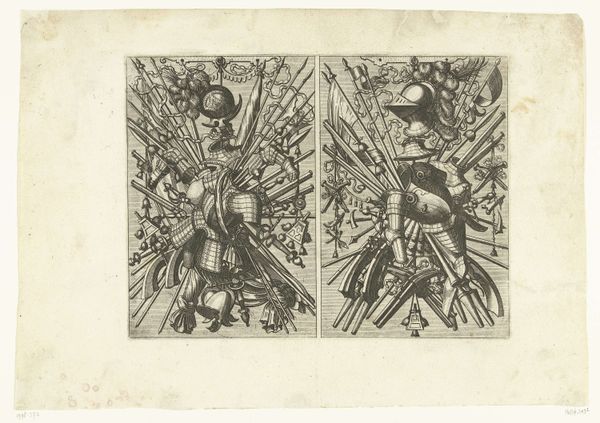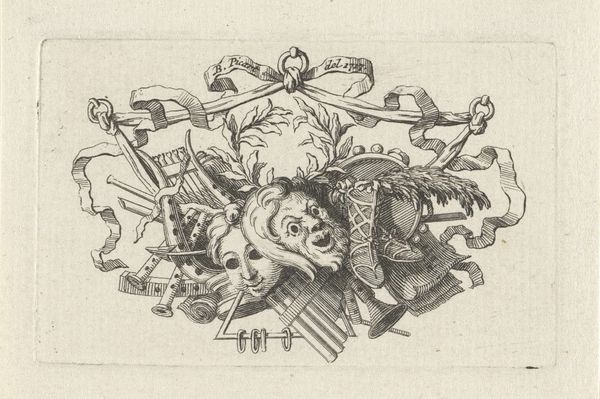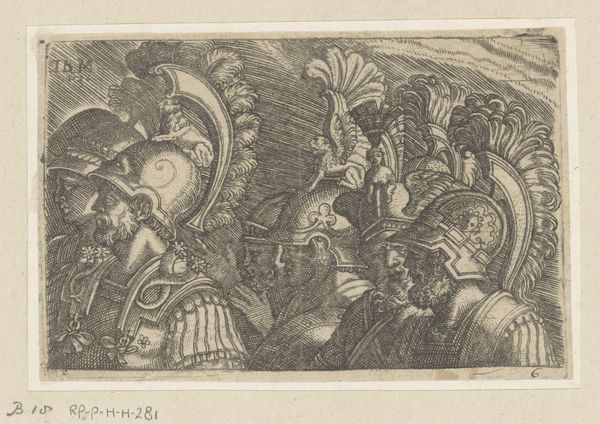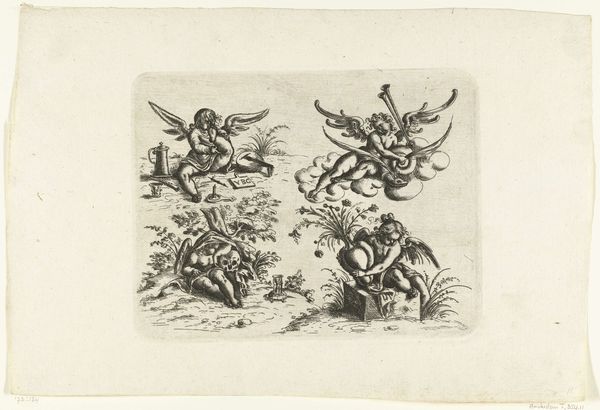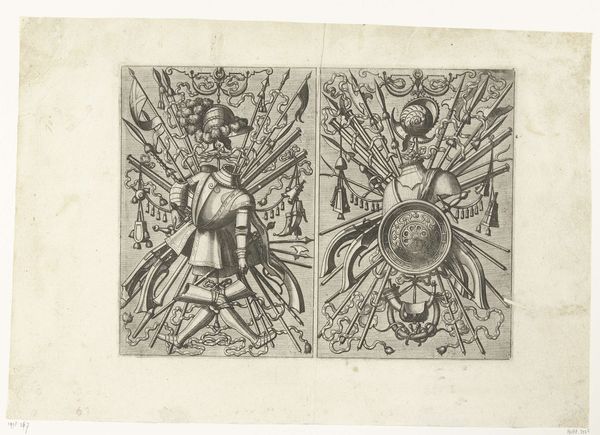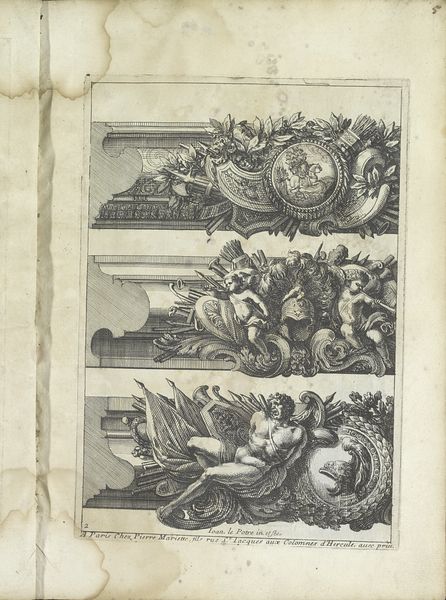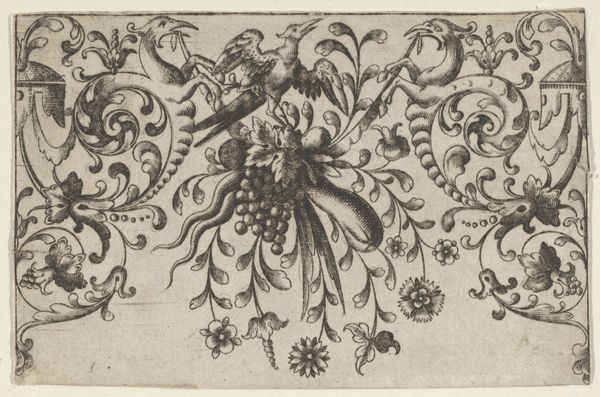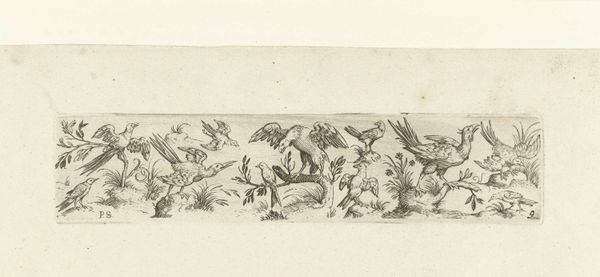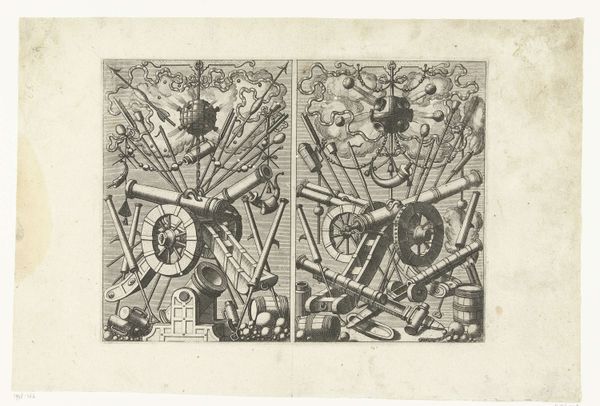
Twee horizontale trofeeën met harnassen en wapens 1558 - 1572
0:00
0:00
johannesoflucasvandoetechum
Rijksmuseum
graphic-art, print, engraving
#
graphic-art
#
ink paper printed
# print
#
11_renaissance
#
engraving
Dimensions: height 184 mm, width 249 mm
Copyright: Rijks Museum: Open Domain
Curator: This detailed print, entitled "Twee horizontale trofeeën met harnassen en wapens" roughly translates to "Two Horizontal Trophies with Armor and Weapons". It was created between 1558 and 1572 by Johannes or Lucas van Doetechum, and now resides here at the Rijksmuseum. Editor: Wow, my first impression is one of overwhelming detail. There's such an incredible amount of intricate linework packed into these two panels. It's almost chaotic, a jumble of objects. Curator: Exactly! The arrangement of weapons and armor functions almost as a symbolic display of power and perhaps, victory. Consider what it communicated to its contemporary audience – the glorification of military might and the societal value placed on conquest and protection. Editor: Looking closely at the graphic art of the print itself, the process reveals layers of meaning. The engraver clearly intended to showcase both artistic skill and access to such rare martial items, highlighting the labor and resources needed to not just create art, but wage wars, or even prevent them. Curator: I would add to that; examining the figures in the center, we find what looks like a man, but without a head. We need to remember that in this historical context, these martial symbols spoke to issues of social hierarchy, religious conflict, and the ever-present threat of violence during the Reformation. Was this headless man intentional, referencing past wars? Editor: Perhaps it suggests that material wealth and warfare, in turn, rob you of your sense of self and individual humanity? The trophies themselves, meticulously depicted with ink on paper, become commodities that participate in, even promote, those political narratives. Curator: Yes! And how might gender and class intersect with this martial display? Who bore the brunt of the conflicts these trophies commemorate, and who reaped the benefits? How might a contemporary audience perceive this glorification of power, considering its violent origins? Editor: It is amazing how this print becomes more about its inherent parts than as a single piece. Each weapon, each carefully rendered line, the paper itself – they all combine into a visual story about labor, about the systems of power, but also about the economic exchange of material culture during the Renaissance. Curator: Precisely! Hopefully we've provided some insight into the complex layers of meaning within this engraving, not only by thinking of it as graphic art, but also by seeing it as an important social and historical artifact of its time. Editor: Yes. By digging into its material composition and broader socio-political elements, it allows us to think about labor, the means of war, and even the meaning of such trophies, even to this day.
Comments
No comments
Be the first to comment and join the conversation on the ultimate creative platform.
